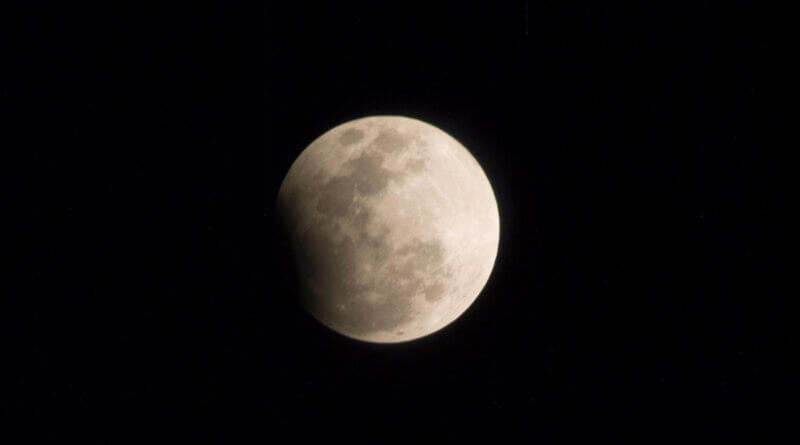Space Is the Place: The Night Sky Over Belper, October 2023
In October’s Night Sky: Jupiter is well placed for viewing. Watch out for Orionids on the 21 / 22nd. A Partial Lunar Eclipse on the 28th. The clocks go back on the 29th of October.
Clocks Go Back
The clocks go back one hour on the 29th of October – meaning that the UK leaves BST for GMT and is therefore in sync with Coordinated Universal Time (UTC).
Orionids Meteor Shower (21st – 23rd October)
The Orionids are generally a good meteor shower. The shower has a broad peak and, as such, there is a good chance of seeing these fast and bright meteors between the 21st of October and the 23rd (from 10.00pm onwards). Projected rates are given as a max of 20 per hour (on the peak night night of the 21st going into the early hours of the 22nd). Past observations have produced at least one or two sightings over an hour or so, and this is a more reasonable expectation of what you might see.
A Partial Eclipse of The Moon: 28th October
There will be a partial eclipse of the full Moon on the 28th of October.
The main part of the eclipse will be apparent between 8.30pm and 9.50pm – reaching its mid-point maximum at 9.15pm. Only a small part of the Moon will be obscured, around 12%, nevertheless a partial eclipse is an unusual event and it should be worth observing. (Headline picture, courtesy of Nasa Images).
The Museum of The Moon: Derby Cathedral
The Museum of The Moon returns to Derby Cathedral. Measuring seven metres (23ft) in diameter, Luke Jarram’s Museum of the Moon features detailed NASA imagery of the lunar surface. Combined with atmospheric lighting and a surround-sound composition, it is well worth a visit – and you also get the chance to see the dark side of the Moon!
The Museum of The Moon is at the Derby Cathedral from the 12th of October to the 10th of November, entry is free (though you can make a suggested donation of £3 if able). More details here: Derby Cathedral: Museum of the Moon
The Moon
10th and 11th of October: (AM- before dawn). The crescent Moon appears to be near to Venus
23 and 24th October: The Moon appears to be close to Saturn
28th October: The Moon appears to be near Jupiter
28th October: A Partial eclipse of the Moon – see entry above (also a supermoon)
30th October: The Pleiades star cluster appears to lie just above the Moon – this should be a good sight through binoculars
The Planets
Jupiter shines brightly in the south, from nightfall onwards. Jupiter is well placed for observation, so, if you can, now is a good time to view it through a telescope to have a closer look.
If you don’t have a telescope, a good pair of binoculars will resolve Jupiter to a disc and will show the more prominent Galilean moons. Or you could go along to a Derbyshire and District Astronomical Society observing session. The next one will be held on Saturday 14th October from 7:30 pm onwards at the Society’s Flamsteed Observatory. The Society boasts a 10-inch Meade Schmidt-Cassegrain telescope and, if they are looking at Jupiter through that, you will get fantastic views. For more details see the meetings schedule at their website: Derby and District Astronomical Society
Saturn is clearly visible by looking south-west. In its part of the sky it is the brightest star-like object. Use the Moon as a marker to locate it on the 23rd and 24th of October. Most astronomy telescopes will show Saturn’s rings.
Venus is now very bright, shining as the “morning star” in the east, just before dawn.
International Space Station
The International Space Station is one of the brightest objects in the night sky. It is not hard to spot and flies-past periodically throughout the year. Fly-pasts tend to swing from PM to AM. Typically it will be in the sky for up to four minutes at a time. It moves slowly across the sky, at first bright and then fading as it moves over the horizon. NASA’s Spot the Station site tracks ISS and gives accurate forecasts of sightings. You can also sign up to Alerts through the website. These will give you advance warnings for more prominent sightings.

